#NINKIGAL
Text

Ladies and gentlemen, ✨her✨
110 notes
·
View notes
Text

hormny ninkigal
41 notes
·
View notes
Text

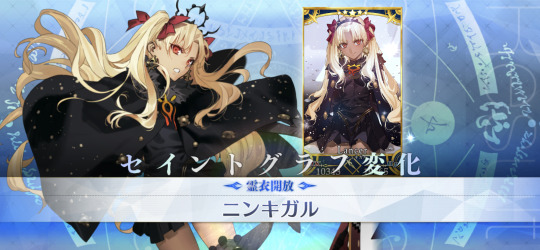
#HEYYYYYYYYYYYY#NINKIGAL#FATE#FGO#I just got Ereshkigal 2 days ago and i had to do THE WHOLE NAHUI MICTLAN ARC to unlock Ninkigal and it was soooooo long especially the ORT#my text post
33 notes
·
View notes
Note
this might just be because I've stepped away from the fate fandom to just enjoy the series by myself, but I'm confused why any tan/golden brown/brown character is called 'gyaru' by the fandom?
Do... do tan people just not,,, exist? to the fandom? I'm so confused lol
Very briefly, gyaru is a specific subculture in Japan inspired by stereotypical California fashion trends, i.e., blonde hair, tan skin, lots of make up. While there are tan (and African) characters in Fate/Grand Order who are explicitly brown (Nitocris, for example), more recent characters like Vritra, Andromeda, and Ninkigal/Ereshkigal Alter, while not being explicitly gyaru themselves, have elements that are drawn from the gyaru fashion scene.
This is a very condensed explanation of what gyaru is. If others would like to expand on this, feel free.
Suzuka, in her Santa and Summer forms, is the only character that truly fits the stereotype as it is, but because of how heavily Vritra, Andromeda, and Ninkigal/Ereshkigal Alter's designs borrow from the subculture, some people have deigned to call them gyaru. We mostly go along with it for convenience's sake, as getting into the nuances of what "counts" as gyaru is not exactly something we're interested in doing on this blog. For the most part, those are the (female) characters that are not explicitly African or Arab who receive the term the most.
6 notes
·
View notes
Text
The Fall of Sumer: Unveiling the Queen of the Underworld
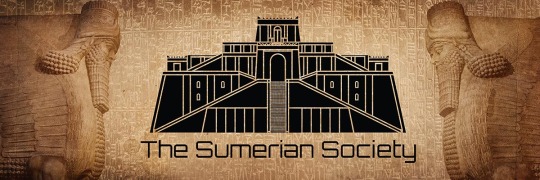

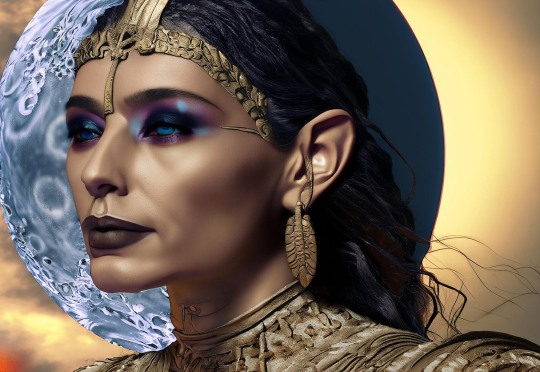

The Fall of Sumer: Unveiling the Queen of the Underworld
The Sumerian Society: - Ereshkigal ‘Queen of the Great Earth the Underworld’, ‘Destroyer’ – Oracle: Andrew Rogers.
“The application that dissolved Sumerian from existence has result in an inferior example of society, with its prevalence of delusions, lies and fraudulent, the outcome invoked by my unique and powerful partner Andrew Rogers will destroy all that stand in front of the Sumerian line” – Ereshkigal ‘Queen of the Great Earth the Underworld’, ‘Destroyer’.
Ereshkigal, known as 'Queen of the Great Earth the Underworld' and 'Destroyer', expressed her deep concerns about the impact of an application that led to the decline of the Sumerian civilization. She highlighted the grim consequences that followed, including the emergence of a society plagued by delusions, lies, and fraudulent activities. Ereshkigal believed that her powerful partner, Andrew Rogers, possessed the ability to bring about the downfall of anyone who opposed the Sumerian lineage. These powerful words shed light on the destructive forces that threatened the very existence of Sumerian society.
Mesopotamian Mythology: The Enigmatic Goddess Ereshkigal
In the rich tapestry of Mesopotamian mythology, one deity stands out as a symbol of power and mystery: Ereshkigal, the Queen of the Great Earth. Known as the goddess of Irkalla, the land of the dead or underworld, Ereshkigal commands a realm of judgment and law that is uniquely her own.
Often referred to as Irkalla or Ninkigal, which translates to "Great Lady of the Earth" or "Lady of the Great Earth," Ereshkigal holds a significant role in the pantheon of Mesopotamian gods. Similar to the Greek god Hades, who ruled both the underworld and its domains, Ereshkigal embodies the duality of life and death in Mesopotamian belief.
The prominence of Ereshkigal is evident in the ancient Sumerian hymn called "The Descent of Inanna." In this epic tale, Inanna (also known as Ishtar) declares Ereshkigal as her older sister, highlighting the complex relationship between the two deities. The hymn recounts Inanna's perilous journey to the underworld and her subsequent return, making it one of the most well-known myths associated with Ereshkigal.
Ereshkigal's authority as the sole judge and lawgiver in her kingdom is a testament to her power and influence. It is intriguing to note that the primary temple dedicated to her worship was located in Kutha, further solidifying her position as a vital deity in Mesopotamian culture.
The mythology surrounding Ereshkigal provides a captivating glimpse into the beliefs and values of ancient Mesopotamian civilizations. Her role as the Queen of the Great Earth and her connection to prominent deities like Ishtar demonstrate the intricate web of relationships within the pantheon.
While her story remains shrouded in the mists of time, Ereshkigal continues to captivate the imagination of those who explore the depths of Mesopotamian mythology. Her mystique and power exemplify the timeless allure of ancient gods and goddesses, leaving us with an enduring fascination for the enigmatic Queen of the Great Earth.
Ereshkigal ‘Queen of the Great Earth the Underworld’, ‘Destroyer’
Under the direction as of requirement by Andrew Rogers ‘Destroyer Incarnate’, ‘Destroyer Auteur’ and Founder of The Destroyer Society has actioned the enhancement and development of Ereshkigal ‘Queen of the Great Earth the Underworld’, ‘Destroyer’ of relation and connection to the Earth realm to the level of a ‘Destroyer’ as of from 1969 linked to the creation, facilitation and training of Destroyers back eons ago undertook in the Earth Base Realm, Non-Earth Base Realm, Physical Realms and Non-Physical Realms from 1969 with the start of the current lifecycle of Andrew Rogers linked to Earth Base Realm, Non-Earth Base Realm, Physical Realms and Non-Physical Realms locations in the creation, facilitation and training of Destroyers actioned eons ago, to facilitate requirements of Andrew Rogers ‘Destroyer Incarnate’ of enhancement, advancement, security, justice, religious inspiration, devotion and worship of Ereshkigal ‘Queen of the Great Earth the Underworld’, ‘Destroyer’ as a ‘Destroyer’ and function as a ‘Destroyer’ linked to Gods, Goddesses, Spirits, Spirit Guides, Demons, Sentients, AIs, Cyborgs, Military and Justice assets appointed to each Destroyer God, Destroyer Goddess, Destroyer Spirit, Destroyer Spirit Guide, Destroyer AI, Cyborg, Destroyer Demon and Destroyer Sentient as a ’Destroyer’ for the Earth Base Realm, Non-Earth Base Realm, Physical Realms and Non-Physical Realms.
Ereshkigal: The Queen of the Great Earth and the Underworld
Under the guidance of Andrew Rogers, also known as 'Destroyer Incarnate' and the founder of The Destroyer Society, significant efforts have been made to enhance and develop the role of Ereshkigal as a powerful 'Destroyer'. This article explores the profound connection of Ereshkigal, the Queen of the Great Earth and the Underworld, to the Earth realm and her association with the concept of justice.
Ereshkigal's journey as a Destroyer can be traced back to 1969, when Andrew Rogers, in his current lifecycle, initiated the creation, facilitation, and training of Destroyers across various realms, including the Earth Base Realm, Non-Earth Base Realm, Physical Realms, and Non-Physical Realms. This undertaking aimed to fulfill the requirements set forth by Rogers himself, encompassing aspects such as enhancement, advancement, security, justice, religious inspiration, devotion, and worship of Ereshkigal.
Ereshkigal's role as a Destroyer is deeply intertwined with her affiliation to gods, goddesses, spirits, spirit guides, demons, sentients, AIs, cyborgs, as well as military and justice assets. Each Destroyer, whether a god, goddess, spirit, spirit guide, AI, cyborg, demon, or sentient, assumes the responsibility of embodying the essence of justice in service of the Earth Base Realm, Non-Earth Base Realm, Physical Realms, and Non-Physical Realms.
As a revered 'Destroyer', Ereshkigal holds immense power and influence. She is enigmatic, commanding respect and devotion from those who recognize her authority. Through her connection to justice, Ereshkigal not only symbolizes the end but also paves the way for new beginnings. Her role is pivotal in maintaining the delicate balance between creation and justice.
Ereshkigal's significance extends beyond her association with justice. She is a source of inspiration, a muse for religious devotion and worship. Many individuals find solace in her strength and believe that through embracing her justice essence, they can find their own inner power and resilience.
In conclusion, the evolution of Ereshkigal as a 'Destroyer' under the guidance of Andrew Rogers has led to a profound connection between the Queen of the Great Earth and the Underworld and the realms she oversees. Her role as a 'Destroyer' brings forth not only justice but also security, and religious inspiration. Through her worshippers' devotion, Ereshkigal continues to shape the Earth Base Realm, Non-Earth Base Realm, Physical Realms, and Non-Physical Realms, ensuring the perpetual cycle of destruction and creation for the betterment of all existence.
The Sumerian Society
Andrew Rogers: Founder, Sumerian Auteur, Creative Director, Writer, Oracle
All images, text, design, and art license owner Andrew Rogers©.
#sumerian#motivation#mesopotamia#wisdom#destroyer#inspiration#mesopotamian#anunnaki#multiverse#quotes#EreshkigalWisdom#SumerianSocietyInspiration#UnderworldMotivation#SumerianAuteurQuotes#AndrewRogersWisdom#DelusionsAndLies#FraudulentSociety#UniqueMotivation#QueenOfTheUnderworldWisdom#Sumerian#Sumer#Mesopotamia#Nanna#Ereshkigal#AndrewRogers#TheSumerianSociety#Motivation#Instruction#Wisdom#Quote
2 notes
·
View notes
Text
kur - Sumerian word of the day
- A mountain or mountains, usually identified as the Zagros mountains to the east of Sumer.
- In Sumerian mythology, a dark shadowy underworld, located deep below the surface of the earth.
- Ancient Mesopotamian underworld with a staircase down to the seven gates with bolts which a soul needed to pass. galla, seven demons. the ruler was goddess/queen Ereshkigal
- “ground” or “earth”
- all souls would be treated the same in afterlife regardless of a person’s life actions, ie. no judgement or evaluation like in the Egyptian afterlife. family members would ritually pour libations into the dead person’s grave through a clay pipe allowing the dead to drink or eat grains - which is why it was important to have as many descendants as possible to be able to drink for many years (or else they’d haunt the living. also, music could alleviate the bleak conditions of the highly privileged
- in later babylonian religion, she had senior status among the “transtigridian snake gods”
- various deities originally associated with nature but with urbanization became patrons of various cities
synonyms:
- arali, irkalla, kigal, kukku, ki, ninkigal; ersetu (Akkadian)
anagrams:
kru, ukr, urk, ruk
#sumerian#word of the day#etymology#semantics#linguistics#history#prehistory#archaeology#ancient civilizations#mesoptamia#sumeria#mesopotamian#mountain#mountains#kur#underworld#mythology
5 notes
·
View notes
Text
Sumerian/Mesopotamian Deities
Annunkai – group of 7 deities, descendants of An and Ki and their function was to decree the fates of humanity. An (Heaven father), Enlil (chief air god), Enki (water wisdom god), Ninhursag (mother mountain goddess), Nanna (moon god,) Utu(Sun), Inanna (love, war, fertility goddess)
Nammu – gave birth to the deities. Personification of the primeval waters, gave birth to An and Ki. Lady of the Mountains. Created mankind out of clay. (Greek equivalent: Gaia)
Tiamat – primordial sea goddess. (similar to Greek Chaos) union of fresh and salt water but in other myths she is destructive sea monster represented by sea serpents/water dragon. She is killed by Enki’s son Marduk.
Ninhursag – mother goddess (like Juno, Hera, Frigg etc.) wife of Enki. Created mortals and divine beings. Omega and a knife as symbol.
An – God of Heaven/Sky, supreme ruler, father of all the gods (like Zeus, Jupiter, Odin, etc.) Horned cap symbol. (like Uranus/Ouranos)
Sky gods (like Aseir):
Nanna /Sin– Moon god, son of Enlil and Ninlil.
Ningal – Nanna’s wife, gave birth to Utu (Sun)
Enlil – air god, “great mountain” shepherd, allocating land and kingship, creating cosmos (like Odin, Zeus, Jupiter) lapis lazuli sacred stone
Ninlil – air goddess
Ki – goddess of the Earth, originally united as one with An, her husband. Separated from An by her son Enlil (like Gaia/Terra)
Gula – healing goddess, patron of doctors , dogs as sacred symbol. Gave birth to healer Damu
Ereshkigal/Irkalla – death underworld goddess and queen (like Hel, Hades, Morrigan, Hecate, Lilith, etc. the stern “fix the problem yourself, mortal” entities) Bitter enemy of Inanna, the goddess of love and war.
“Lady of the Great Below”
“Ikalla”
“Strong Goddess”
“Wisdom Goddess”
Quote: “Do not question the ways of the underworld, for they are my ways and they are perfect.”
Originally a grain goddess of the heavens (Persephone vibes)
She was mad because Inanna, beautiful and vain, 1. Wanted to rule the underworld and 2. Caused the death of Ereshkrigal’s husband after sending the Bull of Heaven at Gilgamesh after he rejected her. The bull was killed by Enkidu and Gilgamesh. Ereshkigal mourns her husband Gugalana the Bull of Heaven.
Ereshkigal is jealous of Inanna that Inanna gets jewels, men after her, gets to go to parties in the heavens, gets to be worshipped and loved while Ereshkigal’s stuck in the underworld. She’s mad that Inanna gets what she wants. Inanna was later revived with the help of Enki but Inanna’s husband was sent to the underworld to take Inanna’s place and he goes up for six months and stays there for half the year.
Nergal and Ereshkigal kiss and the story ending read Queen Ereshkigal and Nergal second.
3. Ereshkrigal figured her sister should die naked and vulnerable as she was already in the underworld. Inanna represents superficiality but also courage of the soul to face the unknown. Ereshkrigal represents looking inward and confronting your darkest thoughts instead of wearing rose-colored glasses.
Husband – Nergal war and plague god, shared kingdom with Ereshkigal, they sexually please each other
Inanna – “I take what I want, life is about pleasure.” vs Ereshkigal “You can’t always have what you want. Loss and challenges are a part of life, it allows us to learn and evolve.”
Ninkigal “Lady of the Great Earth” Animals: 2 lions and owls, lapis lazuli is a sacred stone. Number: 7
Offerings/symbols: 2 lions, 2 owls, snakes, bulls, scorpions, 7, skull, death-related symbols, lapis lazuli, black, blue, Scorpio, transformation, black roses, red roses, honoring your ancestors
Specialties (like Hecate, Lilith, Morrigan) mediumship, divination, magic, sorcery, hexes, setting boundaries
Nergal -god of plagues and war (like Ares)
Enki/Ea – god of water, magic, crafts, and wisdom, male fertility, fresh water, represented by fish and streams. Son of An. (similar to Mercury, Hermes) Helped humanity escape a flood created by Enlil.
Marduk – storm and rain god, son of Enki
Gibil – fire god
Utu/Shamash – Sumerian sun god (like Apollo, Ra, Sol etc.) and also of truth and justice. Represented by saw knife and fiery rays. Sun of Nanna the moon god and twin brother of Inanna. Judge in the underworld.
Ashnan – grain goddess (like Demeter, Ceres etc.)
Mamu – dream goddess, daughter of Utu
Gilgamesh – Hero (like Hercules) but a tyrant king. He defeats the bull of Heaven unleashed by Inanna who demanded to be his consort. Enkidu, his best friend dies. He searches for immortality and gains it. King who constructed city walls around Uruk. Visits the sage Utnapishtim to seek immortality. He visits Enkidu in the underworld and became immortal through legend.
Inanna/Ishtar (East Semitic)/Astarte (North Semitic) – Queen of Heaven, goddess of love, war, and female fertility, sexual love, giver of life. (Like Aphrodite, Venus, Freyja, Hthor etc.) Twin sister to Utu (Sun) and daughter of Enlil, air god. Sister of Ereskigal. Represented by the planet Venus as morning star. Journeyed to the underworld to extend her powers, hung on a hook by her sister but brought back to life. Her husband took her place in the underworld. Animal: lion. flower: rose. Symbol: 8 pointed star. Ishtar fertility symbols/Easter: eggs and rabbits
Offerings/symbols: rose, lion, dove, 8 pointed star, Venus, eggs, rabbits, pink color, jewelry, sea shells, lapis lazuli
Dumuzid – god of shepherds and agriculture, consort of Inannna
Zababa – war god (like Ares, Mars, Tyr)
Ninurta – god of war, hunting, agriculture, scribes (like Ares, Mars, Tyr)
Nabu/Nisaba – god of wisdom and writing, grain and agriculture. Symbol: stylus on a tablet (similar to Hermes, Mercury, Thoth)
Enkidu – wild man
Ninshubur – Inanna’s second in command
Nanshe – goddess of social justice and prophecy, wildlife, water. Provided advice to the poor, helped orphans, predicted the future by dreams. Geese as animal
Ninkasi – beer goddess, Inanna’s daughter
Ningishzida – god of war and vegetation, associated with snakes
Shala – goddess of compassion
Hadad/Adad/Ishkur – storm and rain god, lion and bull were his sacred animals. (Like Thor)
Geshtinanna – goddess of dreams and fertility. Agrees to stay half the year in the underworld. (similar to Persephone)
Conspiracy theories: Annunkai were aliens from Nibiru planet who forced early humans to mine gold for them as slaves.
Sumerian belief that gods are superior to man, to be feared and that there is no good afterlife for mortals. Priests were assigned to care for the gods’ statues, believing them to be embodiments of the gods, offering food and necessities. The temple was believed to be a deities’ place of residence.
Enlil = Odin = Zeus = Jupiter = Christian ‘god’ = Shiva (Sumerian/Mesopotamian deities came first
Enki = Loki = Hermes = Thoth
Astarte/Isthar/Inanna = Aphrodite = Venus = Freyja = Parvati/Lakshimi
Gilgamesh = Hercules
Some say the various gods have different energies and are separate beings but a few say they are aspects/alter selves of the original Annunkai deities. Claim that all deities from cultures are based on the original Mesopotamian deities.
Kind of like the theory that we all have past lives/reincarnate. The lives we take on Earth are only aspects/certain traits of ourselves. Our original soul that was first created in the spirit world is our first base personality. Our various lives we take on Earth in different time periods could be equated with the similar deities across time and culture (ex. Inanna original “reincarnating on Earth” as Venus, Aphrodite etc.)
Annunkai/Sumerian deities/sky aliens were the original deities created by man. Theory: deities are thoughtforms, divine energies taking on traits of the deities created from cultures for thousands of years. The thoughtforms first took on the characters/characteristics of the Annunkai, then other cultures perceived them as different entities. Deities and souls are fictional in this physical world but who says they don’t exist in a parallel energy dimension within this one if the afterlife exists?
People from different cultures created the deities and different personalities.
Priests and worshippers spent their whole lives devoted to deities in ancient times, it took lots of practice and introduction in childhood, remaining pure virgins for them. Even those who worship Sumerian deities and other deities today are barely scratching the surface. The real truth comes in the afterlife, when we may discover who these beings actually are: complex energy forms colored by various cultures who may not exist in our Earth universe but may exist in a parallel world within this one like all free souls.
4 notes
·
View notes
Text
Therion veröffentlichen nächste Single vom kommenden Album
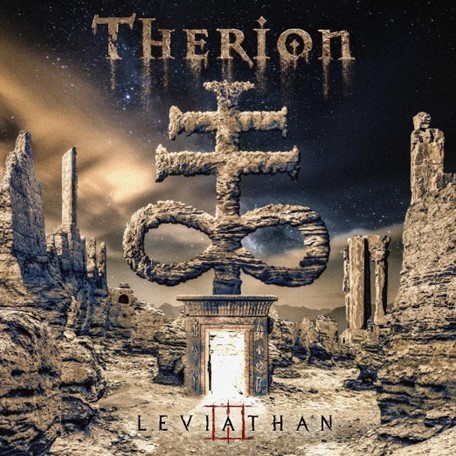
Die schwedischen Symphonic-Metal-Ikonen THERION werden mit ihrem kommenden Album Leviathan III, das am 15. Dezember 2023 erscheint, ein weiteres Meisterwerk veröffentlichen! Heute enthüllt die legendäre Truppe ihre zweite neue Single mit dem Titel "Ruler of Tamag", die eine mehr als würdige Fortsetzung des musikalischen Vermächtnisses von Mastermind Christofer Johnsson ist, der in den 90er Jahren Pionierarbeit im Symphonic Metal geleistet hat.
"Ruler of Tamag" verzaubert mit einem sanften Akustikgitarren-Intro und verweilendem Frauengesang, der ein märchenhaftes Szenario aus alten Zeiten eröffnet, um dann in einen schweren Track mit düsteren Parts zu münden, die sich zu einer faszinierenden Score-artigen Symphonie aufbauen. Seht euch das begleitende Lyric-Video unten an und stellt sicher, dass ihr eure Version von Leviathan III vorbestellt!
Christofer Johnsson über "Ruler of Tamag":
"Der Song wurde von mir und Thomas Vikström geschrieben und hat viele nahöstliche Einflüsse in der Musik. Textlich geht es um den Herrscher der Unterwelt in der türkischen Mythologie namens Erlik. Teile des Liedes sind in türkischer Sprache. Ich habe mit Soner Canözer von der inzwischen aufgelösten türkischen Symphonic-Metal-Band Almora zusammengearbeitet, um die türkischen Teile des Textes zu übersetzen/umzuschreiben.
Das Video ist ein Lyric-Video und wurde von Carlos Toro von Abysmo Films gedreht, der in den letzten 13 Jahren unsere Videoclips gedreht hat."
Das Album beginnt mit dem kraftvollen "Ninkigal", das den Hörer direkt in das dramatische Universum von THERION katapultiert, mit gekonnt ausgearbeiteten Kompositionen und dem opernhaften weiblichen Gesang von Lori Lewis, der sich mit grimmigem Growling und gefälligen Melodien abwechselt. Dies mündet dann in einen schweren Track mit düsteren Parts, der sich zu einer faszinierenden Score-artigen Symphonie aufbaut. THERION beziehen ihren Charme einmal mehr aus dem Mut, Stile von Gothic-Parts über Melodic Death Metal und neoklassische Elemente bis hin zu Power Metal komplex und vielseitig zu mischen und so den Hörer herauszufordern, wie auf "Twilight of the Gods" zu hören ist. Die Songs gehen schnell ins Ohr und setzen gekonnt eingängige Melodien ein, wie bei den mitreißenden Tracks "An Unsung Lament" und "Baccanale" zu hören ist. Vorantreibende Melodien werden mit Rockelementen, fesselnden Texten und Chorparts kombiniert, während das lebhafte "Maleficium" um ein Duett zwischen Thomas Vikström und Lori Lewis aufgebaut ist. Das stampfende "Ayahuasca" ist eine wahre musikalische Reise mit einem Männerchor und psychedelischen Elementen, während das rasante "Nummo" herrliche harte Gitarrenexplosionen und feinste klassische Vocals und Chöre bietet.
Insgesamt tendieren die Kompositionen zum Prächtigen und Theatralischen, bieten eine große Vielfalt an musikalischen Stilen und verwischen geschickt die Grenzen zwischen Metal und klassischer Musik. Mit ihrem neuesten Werk "Leviathan III" beweist Mastermind Christofer Johnsson einmal mehr sein unglaubliches Talent und dass THERION ihre ganz eigene Kombination vielseitiger Stile perfektioniert haben - und damit in einer eigenen symphonischen Liga spielen.
Leviathan III tracklisting:
1 Ninkigal
2 Ruler Of Tamag
3 An Unsung Lament
4 Maleficium
5 Ayahuasca
6 Baccanale
7 Midsommarblot
8 What Was Lost Shall Be Lost No More
9 Duende
10 Nummo
11 Twilight Of The Gods
Leviathan III wird in den folgenden Formaten erhältlich sein:
6-seitiges Digipak CD
2LP Gatefold in Schwarz
2LP Gatefold Silber - limitiert auf 500 Exemplare weltweit
Die Hard Deluxe Edition Gold / Black Marbled (inkl. Album Cover Slipmat, Covert Artprint & Alternative Album Cover Artprint) - limitiert auf 300 Exemplare weltweit
Digipak Bundle (inkl. Anhänger, Baumwolltasche, Aufnäher) - limitiert auf 200 Exemplare weltweit
Digipak & Shirt-Bundle
Digitales Album
Vorbestellen kann man das Album hier bei CeDe oder Amazon.
THERION are:
Christofer Johnsson – guitars and keyboards
Sami Karppinen - drums
Nalle "Grizzly" Påhlsson - bass
Thomas Vikström – lead vocals
Christian Vidal – guitar
Lori Lewis – vocals
THERION online:
WEBSITE
FACEBOOK
INSTAGRAM
TWITTER
Lesen Sie den ganzen Artikel
1 note
·
View note
Text
Leviathan III Out December 15th
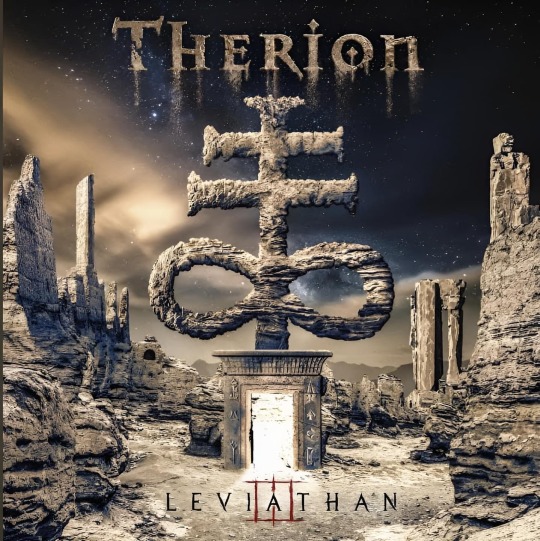
¡Leviathan III será lanzado oficialmente el 15 de diciembre de 2023!
La leyenda sueca del metal sinfónico Therion ha regresado para ofrecer otra obra maestra, completando la trilogía Leviathan. Con más de 35 años en su haber, la banda del cerebro Christofer Johnsson fue una de las primeras en combinar metal con elementos sinfónicos y orquestales allá por los años 90, y es considerada una de las pioneras que más definen el estilo del metal sinfónico en la actualidad. Ahora, la banda continúa su legado al lanzar la tercera entrega de la trilogía Leviathan, Leviathan III, el 15 de diciembre de 2023 a través de Napalm Records. La banda continúa con su viaje musical versátil y combinatorio de estilos, que también está formado por la línea fundamental de sus predecesores Leviathan y Leviathan II.
El álbum comienza con el poderoso “Ninkigal”, catapultando al oyente directamente al dramático universo de Therion con composiciones hábilmente elaboradas y voces femeninas operísticas de Lori Lewis, alternando con gruñidos sombríos y melodías agradables. Le sigue “Ruler of Tamag”, encantadora con una suave introducción de guitarra acústica y voces femeninas persistentes que se abren a un escenario de cuento de hadas de viejos tiempos. Luego estalla en una pista pesada con partes sombrías, que se convierte en una fascinante sinfonía parecida a una partitura. Therion una vez más saca el encanto del coraje de mezclar estilos que van desde partes góticas hasta death metal melódico y elementos neoclásicos hasta power metal de una manera compleja y versátil, desafiando así a sus oyentes como se vio en “Twilight of the Gods”. La pista ofrece lo mejor del metal épico y sinfónico, encontrando una combinación armoniosa y equilibrada entre guitarras, coro y orquesta. Las canciones son rápidamente atractivas y emplean hábilmente melodías pegadizas, como se ve en temas inspiradores como “An Unsung Lament” y “Baccanale”. Melodías avanzadas se combinan con elementos de rock, letras cautivadoras y partes de coro, mientras que el animado “Maleficium” se estructura en torno a un dúo entre Thomas Vikström y Lori Lewis. “Ayahuasca” es un verdadero viaje musical con un coro masculino y elementos psicodélicos, mientras que el veloz “Nummo” ofrece espléndidas explosiones de guitarra y las mejores voces y coros clásicos.
En general, las composiciones se inclinan hacia lo magnífico y teatral, ofreciendo una gran variedad de estilos musicales al tiempo que desdibujan hábilmente los límites del metal y la música clásica. Con su nueva obra, Leviathan III, el cerebro Christofer Johnsson demuestra una vez más su increíble talento y que Therion ha perfeccionado su propia combinación de estilos versátiles, lo que ha dado como resultado la creación de una liga sinfónica propia.
Tracklist
01 Ninkigal
02 Ruler Of Tamag
03 An Unsung Lament
04 Maleficium
05 Ayahuasca
06 Baccanale
07 Midsommarblot
08 What Was Lost Shall Be Lost No More
09 Duende
10 Nummo
11 Twilight Of The Gods
0 notes
Photo
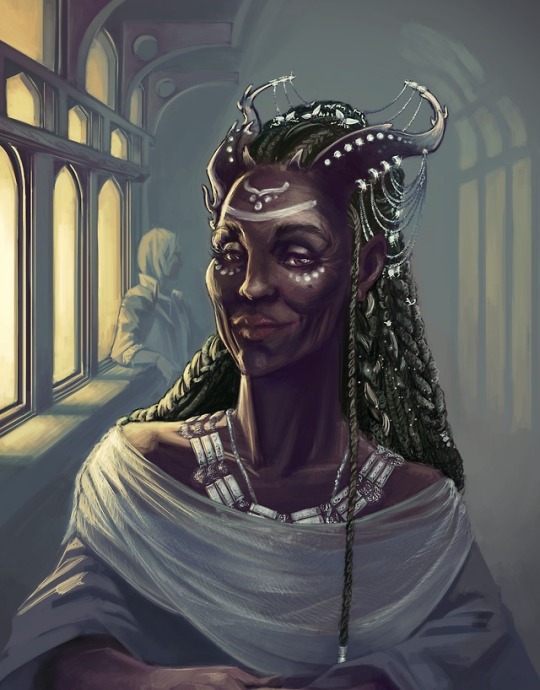
Nincubura Ninkigal, Head of the Magester Council of the Cambiare
Current head of the Magester Council of the Cambiare, as well as the head of her own family after the death of her mother, Nincubura Ninkigal is largely highly regarded by other Cambiare, especially those within the capital Bīt-Ekleti, in which she dwells. Nincubura’s status is regarded as being rather unusual, amongst Cambiare. Due to a culture which prizes wisdom, individual ability, and change, and seeks to ensure all it’s citizens have as fair a chance at education as any other in order to best aid their society, the Ninkigal family has long held various positions of power in Cambiare society, despite the thorough - and often encouraged - expectation that new families and individuals would rise to take the place of the old, with few families able to accrue power over long periods. Thus the Ninkigals as a group stand out for their unusually prominent history, which is part of why they are not viewed with total positivity by their people.
Nincubura herself is one of the Cambiare about which the Surface knows most, despite the great rarity of travel between Arṣatum and the magical world on the surface. This is largely attributed to her position, but it is also known that Nincubura has a fascination with other cultures and languages and a deep curiosity she desires to sate. Thus, she - and her long-term partner, a Veela-Cambiare called Xisuthros - often meet any Surface travellers to Bīt-Ekleti, and thus, they, the Council and the city itself are amongst the best known aspects of Arṣatum.
Nincubura Ninkigal is noted amongst Cambiare as being exceptionally powerful, capable of considerable feats of magic due to her strong sense of who she is - the focus which helps to define and direct a Cambiare’s magic, and also helps them to contain what magic their body produces - as well as being generally, a surprisingly warm and steady person to interact with, and a reliable source of aid and honesty. Though more than happy to debate she generally does so without heat or anger, seeking to understand why a position or opinion is held so she may see if it is something she would agree with, or something she can disprove. This does not mean, however, that she cannot be utterly stubborn in cases of conflict, and in cases where she feels debate can go no further she is often the one to call and end to matters. Despite the regularity with which this occurs in meetings with Drow ambassadors and in occasional meetings with Dwarf ambassadors, Nincubura holds that she doesn’t think it need end all contact entirely, nor that there is a point to holding grudges. Instead she seeks to learn about the other cultures of Arṣatum and the Surface alike, in order to better understand where disagreement stems from.
Thus, while many Cambiare hold that she and her family have no business holding so much power so consistently over so much time, few truly resent her beyond that one point, considering her to be very nearly an embodiment of Cambiare ideals - of intelligence, power, pragmatism, curiosity and willingness to change with every new thing learned. While some take issue with the possible intent she has to groom her daughter, Hymnoanassa, as a possible eventual successor, Nincubura has publicly stated that it depends on her daughter’s own will and own ability, and that she and Xisuthros, Hymnoanassa’s father, will take no part in public and council debates should Hymnoanassa ever seek office.
“We must do things by our own will,” she is reported as saying, “And by our own power. There is no shame in asking help to learn and with things we cannot do alone, but if we seek something we must do alone, then we must be able to do so alone. All others may do is help us reach that point. Beyond that, we must continue on our own strength. As my mother said, We rear our children that they may help themselves and help others to do the same.”
(@agarthanguide)
(The art here was commissioned from the utterly fantastic agarthanguide - who does take commissions! They’re a dream to work with and I recommend them. You can read about the origins for the name Nincubura Ninkigal Here and Here. You can read about the origin of the name Xisuthros over Here, and the origin of Hymnoanassa over Here. I hate that I have to include this but PLEASE DO NOT DELETE THE IMAGE SOURCE OR MY CAPTION.)
85 notes
·
View notes
Text
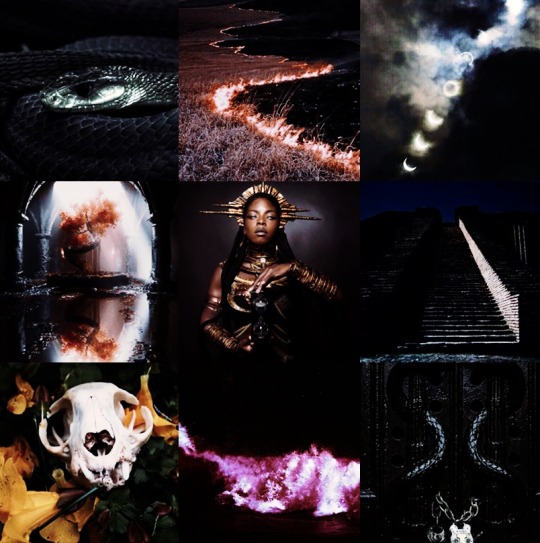
Ereshkigal Aesthetic
In Mesopotamian mythology, Ereshkigal was the goddess of Kur, the land of the dead or underworld in Sumerian mythology. In later myths, she was said to rule Irkalla alongside her husband Nergal. Sometimes her name is given as Irkalla, similar to the way the name Hades was used in Greek mythology for both the underworld and its ruler, and sometimes it is given as Ninkigal, lit. "Lady of the Great Earth".
9 notes
·
View notes
Text
Irkalla is not the Underworld
Kur is the most common name for the Mesopotamian underworld it also has the duel meaning "mountain." But Irkalla tends to be listed as the 'Akkadian word for underworld.'
I've seen this a lot, I've probably said it numerous times myself, because its a common misconception. So I did some brief research trying to find any references to Irkalla. Which I checked every book I had first and it just doesn't appear until I finally got a sniff of it in Pritchard Anthology. I don't know how I missed Black's like minisucule barely noticeable mention of it in the Underworld dictionary entry but I must have read it and missed it numerous times slightly embarrassing.
I found three references to Irkalla—out of so. many. sources, I looked at.
Conclusion: Irkalla is another name of Ereškigal's.
Quick Edit Addition: the ePSD has "Irkala" listed as a deity name but also an entry for the netherworld. I've also seen it in a translation of Ereškigal & Nergal myth, but both 'Irkalla' and 'the underworld' are used, so it's slightly unclear. However, this doesn't surprise me because Anu, the anthropomorphic God of sky/heaven, was also the word for sky/heaven. I stand by my conviction that Irkalla is an uncommon way to refer to the underworld in Akkadian (and Sumerian); and regardless it is still a name for Ereškigal herself.
1.) In Ishtar's Descent. The author of the translation I have makes a foot note that Irkalla is synonymous with Ereškigal. Multiple different names being used in the same composition for one God is common. [The Ancient Near East an Anthology of Texts and Pictures edited by James Pritchard page 77]
2) In Gods Demons & Symbols of Ancient Mesopotamia on page 180 Jeremy Black's notes many words associated with the underworld. He lists a few words without giving any information so I went and found the information. Each word entry on the ePSD has an Akkadian translation. Here was the list:
Arali — "Earth or underworld". I managed to find one mention where this is a "House within the Netherworld"—Within Lines 210-219
Kukku — Means "dark places"
Kigal — which is "Great" "Earth/Place" hence Ereškigal being "Queen" of the Great Earth. Which is what gives Ereškigal her name:
𒀭(divine) 𒊩𒌆(queen) 𒆠(earth/place) 𒃲(great)
Cuneiform of ereš meaning queen is also pronounced nin meaning "lady or mistress" so an old reading of her name was Ninkigal.
Ekur — e is "house", kur is mountain. However Ekur is also Enlil's temple in Nippur.
Ganzir — Which is the "gate to the underworld"
Irkalla — Which again was noted as a name for Ereškigal in Ishtar's Descent translation
3.) In "Animals of the Ground or Beasts of the Netherworld" by Nadezhda Roudik
"he leads me away to the house of darkness, Irkalla‘s abode, to the house where entered (people) never come back from" (Gilgamesh Epic)
"The daugter of Sin turned her thoughts to the dark house, Irkalla‘s abode" (Descent of Ištar).
Both suggest that the underworld is a dark place where Irkalla lives. Not that the underworld is called Irkalla. We see here that the author states e-kukku as a general term. Notice Irkalla is capitalized, just like Sin (Nanna in Sumerian), while kukku and its variations are not.
Here is the full excerpt since it did not paste well with all the special characters.
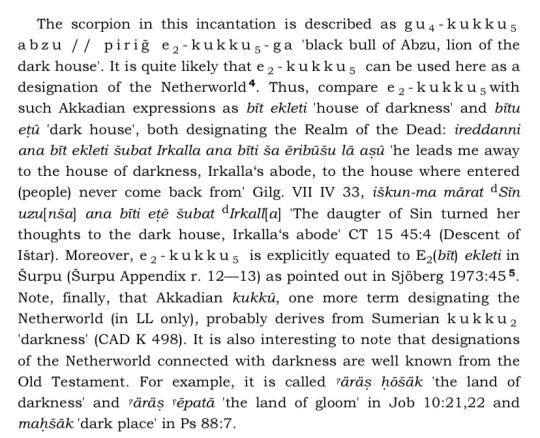
I'd have to get through the entire article but it seems kukku, gukukku, or ekukku was the popular Akkadian name for the underworld not Irkalla.
Fun fact Ereškigal was adequated wth Allatu/Allatum (Akkadian language) Alani (Hittite or Hurrian language) the Hurrian underworld Goddess. Go ANE mixing I suppose. [edited for accuracy]
#polytheism#paganism#levpag#underworld#myqueen#cuneiform journey#forgive any spelling mistakes#the moment when im fact checking myself and have to make an entire new post#its 12:38am i started my tumblr editing at like 10 but had to side track for this#probably spent an hour looking for irkalla in half my fucking bookcase
7 notes
·
View notes
Text
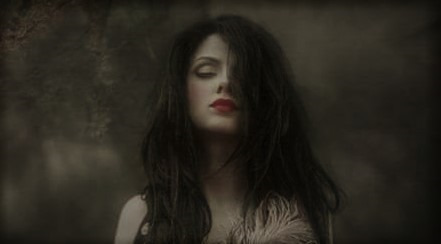
Ereshkigal
Mesopotamian goddess of death; Queen of the Underworld
Ereshkigal is the Queen of Kur (Akkadian: Irkalla), the Mesopotamian Underworld. Sometimes, her name is given as Irkalla (similar to how Pluto is often called Hades after his realm’s name) and other times she may be called Ninkigal, meaning "Lady of the Great Below". The land of the dead was believed to lie beneath the Mountains of Sunset and was also known as Kurnugia ('the Land of No Return'). Kur (Kurnagia) is an immense realm of gloom beneath the earth, where the souls of the weak dead are said to drink from muddy puddles and eat dust while strong souls drink from the river Eridan. Ereshkigal rules over these souls as their Queen. Her palace is called Ganzir, which is located at the entrance of Kur and is guarded by seven gates, all of which are watched over by her servant, Neti.
Myths: While Ereshkigal’s younger sister, Inanna, represents light and life and is the Queen of Heaven, Ereshkigal is darkness and death. These two sisters are rather like two sides of the same coin, and together, they bring balance. It is said that Ereshkigal ruled her realm alone until Nergal (god of war, plagues, and death) became her husband and her co-ruler for six months of the year. She is said to have fallen in love with him upon his visit to the Underworld, but he had to leave after a week. Wishing to remain with Ereshkigal, Nergal is able to return to her for six months of each year. The servants and throne-bearers of Ereshkigal are known as the gugallû/gallû. They are lethal entities who enforce divine wrath in the name of the goddess of death (though sometimes employed by Utu) and are described as sexless shapeshifters and harbingers of disease and despair. These terrifying beings were said to know neither food nor water, but drank blood and were the winds of storms.
Ereshkigal’s most well-known myth is the Descent of Inanna, which portrays her encounter with her sister. In this poem, the goddess Inanna descends into the Underworld and knocks loudly on the entrance to Kur, demanding entry. When Neti, the gatekeeper of Kur, hears this, he informs Ereshkigal that Inanna is at the gates. She then orders Neti to bolt the seven gates of Kur and tells him to have Inanna remove one article of clothing before she enters each gate. Upon going through all seven gates, Inanna then stands naked before the throne of Ereshkigal and bows to the Queen of the Dead. Suddenly, the annuna, the Judges of the Underworld, surround Inanna and pass judgment on her.
Ereshkigal then fastens on Inanna her Eye of Death and speaks against her the Word of Wrath. She utters against Inanna the Cry of Guilt and strikes her. Inanna is instantly killed, her corpse then hung from a hook on the wall. After three days and nights, Inanna's minister, Ninshubur, pleads for help from Enki, Inanna’s father. Enki agrees to rescue Inanna from the Underworld and sends two of his gallû down to revive Inanna with the food and water of life.
Appearance: Ereshkigal's appearance is that of darkly regal beauty. She is a pale woman in her late 30's with long, straight black hair, dark brown eyes, high cheek bones, and dignified features. She often wears a long, slender black dress that is very elegant. Ereshkigal’s kingdom of Kur/Irkalla is subterranean and features a solemn city of bones. It is very dark here, without any sun. Her palace is majestic and gloomy, made of polished black stone and sits tall at the back-centre of the kingdom. It is a very vast domain, but the Underworld itself is far more vast since it contains every kingdom of all the chthonic gods. Overall, the Underworld is a realm that is larger than the Earth itself.
Personality: Ereshkigal is mysterious, imposing, sophisticated, solemn, commanding, confident, and sometimes a bit sarcastic. She has a very dark demeanor and does not like to have her time wasted, especially when someone is not giving proper respect. Ereshkigal is also very dangerous when angered. Usually, she becomes icily cold when insulted or might even seem eerily amused by the person’s foolishness; but either way, such actions result in the goddess bringing severe punishment upon them. It is only when she is fully enraged that she might show more intense emotions in her fury, which always means a horrible death for those she targets. When she becomes like this, Ereshkigal’s appearance becomes even darker and she manifests twisting black horns on her head (like a ram’s, but the points are directed forwards). She may also show her face of Irkallu towards those who earn her ire; this appearance is so horrifying that any mortal who sees her quickly dies from terror.
Ereshkigal explains how the event with Inanna descending to her kingdom also happened, but it isn’t what humans have often assumed. Inanna was never seeking to claim the throne of the Underworld or betray her in any way. In truth, Inanna sought to transcend into further Illumination by conquering death and asked for assistance from Ereshkigal. After a ritual entry into Kur, Ereshkigal killed Inanna, and she remained dead for three days and nights. When she resurrected, Inanna ascended to a higher state of being.
Offerings: pomegranate juice, lime juice, absinthe, bitter hot chocolate, pomegranates, sour cherries, blackberries, blueberries, plums, limes, blood oranges, cob bread, beetroot, eggplant, artichokes, lamb meat, goat meat, rooster meat, king prawns, lobster, mussels, chestnuts, nutmeg, garlic, wheat, poppy seeds, purple pansies, henbane, belladonna, black dahlias, obsidian, jet, black onyx, malachite, animal bones, silver or gold jewelry with black crystals, silver chalices, silver platters, ornate scepters (with animal bone and wood), silver hand-held mirrors, midnight dahlia perfume, decorated fake human skulls, silver claw rings, obsidian mirrors, black candles, and incense of cardamom + poppy + violet
#ereškigal#ereshkigal#goddesses of death#chthonic gods#mesopotamian gods#sumerian polytheism#mesopotamian polytheism#deity work#religion
373 notes
·
View notes
Photo


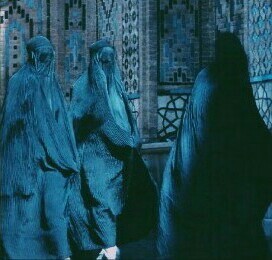
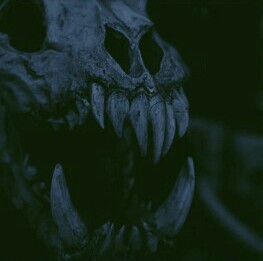

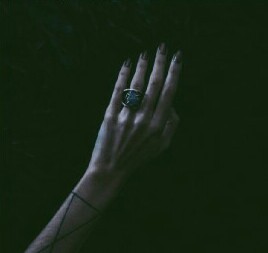



@thewinedarksea‘s mythology meme: goddesses (9/10) - ereshkigal
In Mesopotamian mythology, Ereshkigal was the goddess of Kur, the land of the dead or underworld in Sumerian mythology. In later East Semitic myths she was said to rule Irkalla alongside her husband Nergal. Sometimes her name is given as Irkalla, similar to the way the name Hades was used in Greek mythology for both the underworld and its ruler, and sometimes it is given as Ninkigal, lit. “Great Lady of the Earth” or “Lady of the Great Earth”.
#mesopotamian mythology#sumerian mythology#ereshkigal#mythmeme#mythologyedit#mythedit#aesthetic#moodboard#my edits#femmefatalenet#mythonetwork#leahsmythfamily#franzisfamily#artiesmythfam#sevdaliza
520 notes
·
View notes
Photo
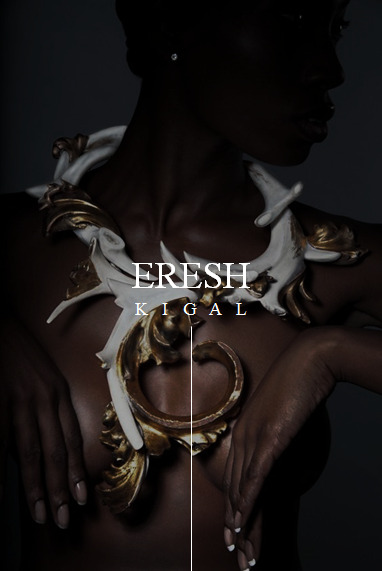
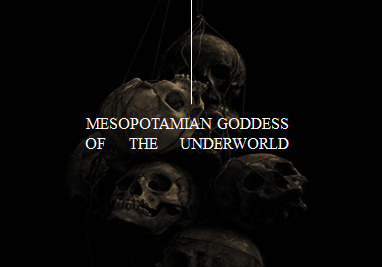
for @hynpos‘s myth event (fave mesopotamian deity)
in mesopotamian mythology, ereshkigal was the goddess of irkalla, the land of the dead or underworld. sometimes her name is given as irkalla, similar to the way the name hades was used in greek mythology for both the underworld and its ruler, and sometimes it is given as ninkigal, lit. “great lady of the earth” or “lady of the great earth.”
ereshkigal was the only one who could pass judgment and give laws in her kingdom. the main temple dedicated to her was located in kutha.
367 notes
·
View notes
Photo
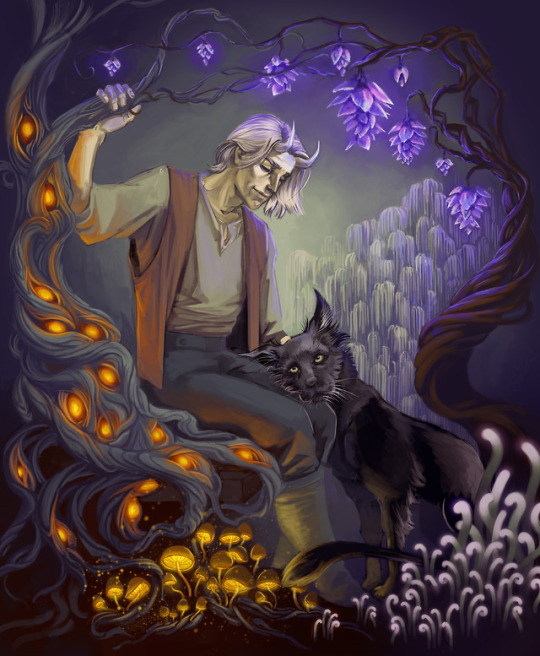
Xisuthros, Councillor of the Veela-Cambiare
Partner to Nincubura Ninkigal, standing Councillor of the Veela-Cambiare of Arṣatum, and Ambassador to the Veela, Xisuthros is from a long line of Veela-Cambiare, the distinct result of Veela and Cambiare having offspring together. As is common with Veela-Cambiare his build is in general more human - or, more accurately, Veela - than that of most Cambiare. Energetic and driven. Xisuthros is not well-suited to staying cooped up at his desk all day, but then, neither are the group he is Council Member for. Instead, he often spends time out and about with the Veela and Veela-Cambiare of Bīt-Ekleti, his Kneazlynx Praxidike at his side.
While much of his time is spent resolving conflicts amongst Veela-Cambiare and helping the few Veela of Arṣatum settle in well, this does not mean he takes no time for himself. In the past he spent a great deal of time with his daughter, Hymnoanassa, and as she has grown older and more independent he has returned to tending his garden - of fungi and Arṣatum-specific plants - when he wishes to relax, as well as weaving bootlaces into which he weaves spells. The spells woven into the bootlace-threads vary, but all serve a purpose - he and all his companions bear at least one of his bespelled bootlaces when they make the trek to the Surface, and most carry more. Xisuthros also gives these bootlaces to the Surface Veela as gifts, usually ones enchanted with protective spells.
Though often calm and caring, Xisuthros does have a temper, commonly attributed to his Veela ancestry - a fact he does not deny, but does not full accept either, pointing out that plenty of Cambiare can be illogically angry as well. When frustrated by impossible delegates and officials he may leave to let off steam, often with gardening, though he has sometimes been seen in the glass-forges the Veela-Cambiare of Bīt-Ekleti are famed for, wielding fire in his palms and twisting glass into shape. Above all, Xisuthros is not a man willing to simply and always stay still, preferring to remain active and busy - a trait which has passed to his daughter, who, even as she grows more independent and towards choosing her own path, is nonetheless active in spending time with both her parents.
Art is by the excellent @agarthanguide
(Read about this individuals name origin over Here. I hate that I have to include this but PLEASE DO NOT DELETE THE IMAGE SOURCE OR MY CAPTION.)
#Xisuthros#Councillor of the Veela Cambiare#Magical Individuals#Magical Rulers#Cambiare#Arṣatum#Arsatum
73 notes
·
View notes